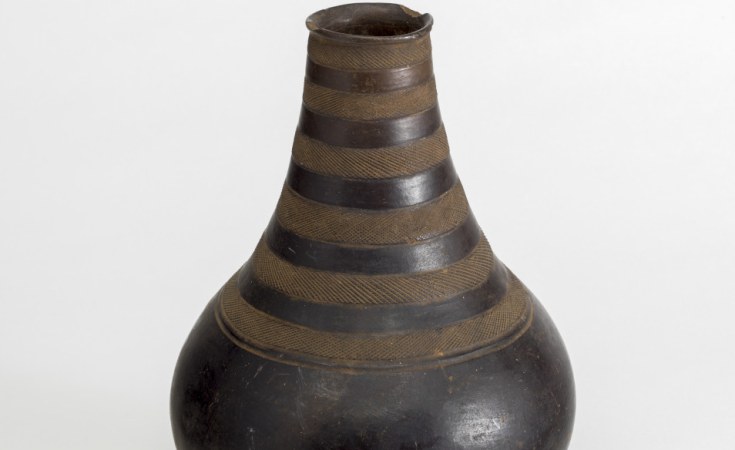Kampala — Everything in a museum has historic importance and deserves potent protection. If you have been to the Uganda museum, it may not have impressed you but it still stores all our pieces of ancient memories.
However some of the most important and controversial items are missing. But what are they? In whose custody are they and why? One of the most important yet missing items from the museum is the Luzira head.
It is one of the terracotta figures (fired clay object) made before 1600AD. It is Uganda's most important item of pre-colonial art, found while digging the foundation trenches of Luzira prison in 1929.
When the Europeans who were supervising the construction found it, they handed it over to the then Government geologist Mr E.J Wayland, who had it sent to Britain for 'studying'.
However, according to Mr Peter Bisasso, Conservator of antiquities in charge of the archeology section at the Uganda museum, "When they took it for studying, they never sent back the report nor the object."
Attempts to ask for it have been futile, says Bisasso says. Authorities at the British museum claim that the archeological piece has stayed for long in Europe and gotten used to that kind of climate. That if they return it, it will deteriorate and break.
"This is totally absurd. The figure was made with African clay and had stayed in Africa for all that while before they found it. It is not sensible that they claim it will get dismantled from here. They then made a cast and sent it to us. It is the one standing in our museum today," said Bisaaso.
The Luzira head is quite unique and has substantial value because it is in form of a sculpture; one of the few sculptures that are believed to have been made during the Stone Age period; it is an epitome of creativity.
It has a long neck with suggestions of necklaces around it and rings on then feet, which are indicative of either the absence of hair shaving, femineity or of a longhaired race. Its appearance could be attributed to a king; in Buganda kings like Muteesa wore rings. Tribes in western Uganda also wore rings.
According to oral tradition, the Luzira head could have been a symbol of a clan god, forming an alter piece for the shrine or temple of the Ngonge clan (Otter). The temple was likely to have been situated around Lake Victoria.
The fact that the figure was dug up from near the lakeshore, at Luzira, lends credence to oral traditions. Yet, any objects in sculpture form are believed to have come from Egypt or West Africa. So the question is, if it is not from Uganda how did it get here?
Some people have related it to witchcraft because it has bead like structures on the head. Bisasso however says: "We can relate the Luzira head to the Ngonge clan. They made the Entebbe figurings which have a slight resemblance to the Luzira head, so they could have made the Luzira head too."
An official, only identified as Ms Rose says: "It could not have come from Egypt because by the time it is believed to have been made, the Egyptians were far ahead of such kind of art." In case you would want to see this controversial piece of art, go to the museum, though it is only a duplicate. The original is in the British museum under accession number: AF1931, 00105,0014.
All kingdoms have drums, which symbolise authority. The Baganda have mujaguso, which is a collection of a number of drums, each protected by different people. If anyone captures these drums, a kingdom is deemed overthrown.
But the Ankole royal drums, the Bagyendamwa is mysteriously missing. Prince John Barigye, heir to the Ankole throne, says he does not have the drum. "The government of Uganda has it because the kingdom of Ankole has not been reinstated. The drum is actually in State House," he says.
Bisaso says they have it in the museum strong room but declines to let the Sunday Monitor have a look at it. Asked why Prince Barigye does not have it, he says:
"Prince Barigye was stopped from taking the drum because the Ankole kingdom has not been restored." However, Barigye insists that the drum is in State House. And does it mean that whoever has the drums is the reigning ruler of Ankole Kingdom?
Have you ever wondered where the posh and expensive cars that Ssekabaka (deceased king) Muteesa used to drive are? Well, they are not in the museum but buried in the ground in Mengo Lubiri palace.
I was however denied permission to see them because 'The Kabaka does not allow the public in'. According to Mr Dick Kasolo, a press officer at Bulange Mengo, "when former President Milton Obote exiled Kabaka Muteesa in 1966, he had his cars buried and put guards to prevent anyone from removing or seeing them.
This was done for no explicable reason but jealousy. But they are no longer proper cars; it is merely scrap. With time when Buganda has finally stabilized, we hope to put the scrap in a public place for tourism purposes."
Funny where important items can be kept!


